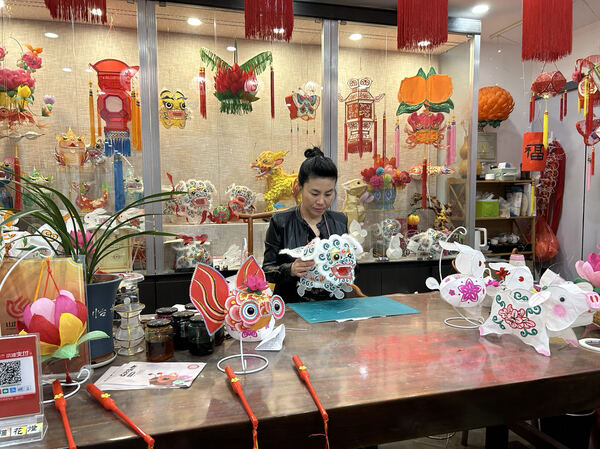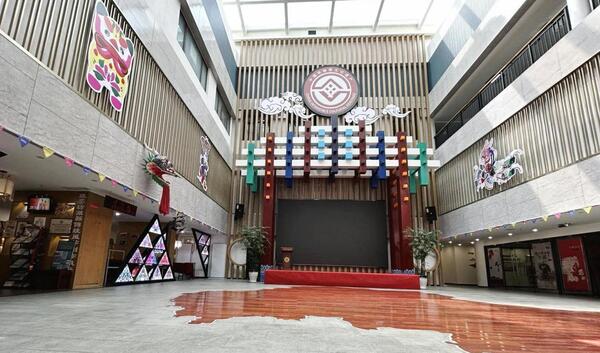Weicheng's intangible cultural heritage flourishes in winter
Every year, winter brings a vibrant resurgence of folk traditions celebrating lunar new year in Weicheng district, Weifang in Shandong province.
Studios making Lao Mao Hua Deng, or tiger and cat lanterns in literal translation, at the Shihuyuan Garden Cultural Block are experiencing a bustling period. Li Mei, a skilled artisan behind a line of lanterns, is determined to pass on this cultural gem to younger generations through her studio.

Li makes lanterns in her studio. [Photo by Liu Chao for chinadaily.com.cn]
The lantern, as a local cultural trademark, combines the features of both tigers and cats. Regrettably, the number of craftsmen learning this traditional art is dwindling. Li's studio serves as a hub for study tours and weekly school activities, introducing the enchanting art to a wider audience.
In reality, Weicheng has created a space for intangible cultural heritages, displaying over 17 art forms, including Weixian kites and walnut carvings.
Liu Zhijiang, an inheritor of traditional kite-making, imparts techniques in one of the studios in the space. He, along with students, also makes efforts to blend ancient craftsmanship with innovative approaches.

The intangible cultural heritages space displays over 17 art forms and offers rooms for people to learn. [Photo by Liu Chao for chinadaily.com.cn]
Ding Chuanxin, the chairman of the Weifang Arts and Crafts Association, emphasizes the significance of the intangible cultural heritage space. Beyond demonstrations, the space hosts regular public training courses to inform and teach those who are interested.
Weicheng's approach factors in tradition and modernity, bringing intangible cultural heritage closer to the people. The city's rich cultural tapestry thrives in the winter, ensuring the preservation of its invaluable heritage. (Edited by Hu Haoshu)








